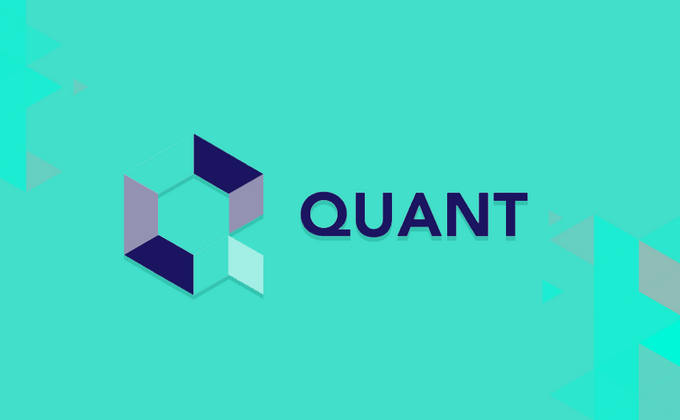-
 Bitcoin
Bitcoin $103,667.1379
0.84% -
 Ethereum
Ethereum $2,632.6478
6.96% -
 XRP
XRP $2.6116
4.23% -
 Tether USDt
Tether USDt $1.0001
0.01% -
 Solana
Solana $180.6753
4.73% -
 BNB
BNB $656.0167
1.00% -
 USDC
USDC $1.0001
-0.01% -
 Dogecoin
Dogecoin $0.2371
5.54% -
 Cardano
Cardano $0.8198
3.59% -
 TRON
TRON $0.2739
4.11% -
 Sui
Sui $3.9780
0.66% -
 Chainlink
Chainlink $17.1336
4.09% -
 Avalanche
Avalanche $25.7726
5.36% -
 Stellar
Stellar $0.3129
2.38% -
 Shiba Inu
Shiba Inu $0.0...01602
4.15% -
 Hedera
Hedera $0.2136
3.04% -
 Hyperliquid
Hyperliquid $25.7515
3.75% -
 Pi
Pi $1.1839
3.33% -
 Toncoin
Toncoin $3.3509
1.78% -
 UNUS SED LEO
UNUS SED LEO $8.7662
2.04% -
 Polkadot
Polkadot $5.1151
2.78% -
 Bitcoin Cash
Bitcoin Cash $406.0174
1.86% -
 Litecoin
Litecoin $103.1616
0.91% -
 Monero
Monero $340.2058
0.52% -
 Pepe
Pepe $0.0...01408
3.21% -
 Bitget Token
Bitget Token $4.8370
2.43% -
 Dai
Dai $0.9999
-0.02% -
 Ethena USDe
Ethena USDe $1.0005
-0.04% -
 Uniswap
Uniswap $6.7509
1.47% -
 Bittensor
Bittensor $462.3636
0.70%
Which country issued Quant coin
Quant coin (QNT), issued by the British company Quant Network, empowers the Quant Network, an operating system connecting blockchains and distributed ledger technologies.
Nov 08, 2024 at 08:54 pm

Which Country Issued Quant Coin
Quant (QNT) is a utility token that powers the Quant Network, a blockchain-based operating system that connects different blockchains and distributed ledger technologies (DLTs), enabling interoperability and communication between them. QNT is used to pay for transaction fees on the Quant Network and to access its various services and features.
Country of Origin
The Quant Network is a British company headquartered in London, England. As such, Quant coin is considered to be a British cryptocurrency.
Quant Network: A Closer Look
The Quant Network is a foundational layer that connects multiple blockchains and DLTs, forming a universal network of blockchains known as the Overledger. It provides interoperability, scalability, and security for enterprises and developers building blockchain applications.
The Quant Network operates on a multi-chain architecture, supporting various blockchains such as Bitcoin, Ethereum, Ripple, and Hyperledger Fabric. It also supports different consensus mechanisms, including Proof-of-Work (PoW), Proof-of-Stake (PoS), and Delegated Proof-of-Stake (DPoS).
Key Features of the Quant Network
- Interoperability: Enables seamless communication and data exchange between different blockchains and DLTs.
- Scalability: Provides high transaction throughput and low latency by utilizing a multi-chain architecture and sharding techniques.
- Security: Leverages multiple layers of security measures, including cryptographic algorithms, smart contract auditing, and network monitoring.
- Developer Tools: Offers a suite of developer tools, including APIs, SDKs, and documentation, to facilitate the development of blockchain applications.
Role of QNT in the Quant Network
QNT serves several crucial roles within the Quant Network ecosystem:
- Transaction Fees: QNT is used to pay for transaction fees on the Quant Network, including fees for transferring QNT, deploying smart contracts, and interacting with DLTs.
- Access to Services: QNT holders can access various services and features offered by the Quant Network, such as platform usage, technical support, and access to exclusive events.
- Governance: QNT will be used for on-chain governance in the future, allowing holders to participate in decision-making related to the Quant Network's development and direction.
Conclusion
Quant coin, issued by the British company Quant Network, is a utility token that plays a vital role in the operation and growth of the Quant Network, a blockchain-based operating system that connects different blockchains and DLTs, enabling interoperability and communication between them.
Disclaimer:info@kdj.com
The information provided is not trading advice. kdj.com does not assume any responsibility for any investments made based on the information provided in this article. Cryptocurrencies are highly volatile and it is highly recommended that you invest with caution after thorough research!
If you believe that the content used on this website infringes your copyright, please contact us immediately (info@kdj.com) and we will delete it promptly.
- Experience Bitcoin mining from the comfort of your own home in 2025 with WinnerMining's latest ASIC hardware
- 2025-05-14 17:05:13
- What is the Q-Day Prize?
- 2025-05-14 17:05:13
- Bitcoin (BTC) Spot ETFs Record $96 Million in Daily Outflows
- 2025-05-14 17:00:12
- The Cryptomarkt is running at full speed again
- 2025-05-14 17:00:12
- Pi Network (PI) Cools Down After 90% Rally, But Analysts Remain Unfazed
- 2025-05-14 16:55:12
- XRP (XRP): XRP Price prediction flat for five years
- 2025-05-14 16:55:12
Related knowledge

What is Ethereum’s Slashing mechanism and how to punish malicious behavior?
Feb 20,2025 at 03:08am
Key PointsOverview of slashingDifferent types of slashing in EthereumIncentives and consequences of slashingIdentifying and reporting slashed validatorsOngoing discussions and potential improvementsEthereum's Slashing Mechanism: Punishing Malicious BehaviorEthereum's slashing mechanism is an essential tool for ensuring network security and punishing mal...

What is the verifier node of Ethereum and how to become a verifier?
Feb 19,2025 at 06:00pm
The Verifier Node of Ethereum: A Comprehensive GuideKey Points:What is a Verifier Node?How to Become a Verifier NodeResponsibilities and Rewards of a Verifier NodeMinimum Requirements for Becoming a Verifier NodePotential Difficulties in Running a Verifier Node1. What is a Verifier Node?A Verifier Node is an independent entity on the Ethereum network th...

What is Ethereum’s staking, and how to participate and earn money?
Feb 19,2025 at 04:37pm
Key Points:Understanding Ethereum's Staking MechanismSteps to Participate in StakingBenefits and Rewards of StakingSecurity and Risk ConsiderationsTechnical Requirements and Hardware OptionsPotential Challenges and Troubleshooting TipsFAQs on Ethereum StakingWhat is Ethereum's Staking?Proof-of-Stake (PoS) is a consensus mechanism used in blockchain netw...

What is Ethereum’s DAO (Decentralized Autonomous Organization) and how does it work?
Feb 20,2025 at 03:12am
Key PointsDefinition and Structure of a DAOGovernance and Decision-Making in DAOsBenefits and Use Cases of DAOsChallenges and Limitations of DAOsWhat is Ethereum's DAO (Decentralized Autonomous Organization) and How Does It Work?Definition and Structure of a DAOA Decentralized Autonomous Organization (DAO) is an innovative governance and management fram...

What is Ethereum's multi-signature wallet and how to improve security?
Feb 20,2025 at 02:18pm
Key Points:Understanding the Concept of a Multi-Signature WalletBenefits and Drawbacks of Multisig WalletsRequirements for Setting Up a Multisig WalletStep-by-Step Guide to Generating a Multisig WalletImplementing Strategies for Enhanced Security1. Understanding the Concept of a Multi-Signature WalletA multi-signature (multisig) wallet in the Ethereum e...

What is Ethereum's oracle and how to provide data for smart contracts?
Feb 21,2025 at 01:30am
Key Points:Understanding the concept of oracles in EthereumExploring different types of oraclesDetailed guide on how to provide data for smart contractsAddressing potential challenges and considerationsWhat is Ethereum's Oracle?Oracles are crucial components in the Ethereum ecosystem, enabling smart contracts to access real-world data and off-chain even...

What is Ethereum’s Slashing mechanism and how to punish malicious behavior?
Feb 20,2025 at 03:08am
Key PointsOverview of slashingDifferent types of slashing in EthereumIncentives and consequences of slashingIdentifying and reporting slashed validatorsOngoing discussions and potential improvementsEthereum's Slashing Mechanism: Punishing Malicious BehaviorEthereum's slashing mechanism is an essential tool for ensuring network security and punishing mal...

What is the verifier node of Ethereum and how to become a verifier?
Feb 19,2025 at 06:00pm
The Verifier Node of Ethereum: A Comprehensive GuideKey Points:What is a Verifier Node?How to Become a Verifier NodeResponsibilities and Rewards of a Verifier NodeMinimum Requirements for Becoming a Verifier NodePotential Difficulties in Running a Verifier Node1. What is a Verifier Node?A Verifier Node is an independent entity on the Ethereum network th...

What is Ethereum’s staking, and how to participate and earn money?
Feb 19,2025 at 04:37pm
Key Points:Understanding Ethereum's Staking MechanismSteps to Participate in StakingBenefits and Rewards of StakingSecurity and Risk ConsiderationsTechnical Requirements and Hardware OptionsPotential Challenges and Troubleshooting TipsFAQs on Ethereum StakingWhat is Ethereum's Staking?Proof-of-Stake (PoS) is a consensus mechanism used in blockchain netw...

What is Ethereum’s DAO (Decentralized Autonomous Organization) and how does it work?
Feb 20,2025 at 03:12am
Key PointsDefinition and Structure of a DAOGovernance and Decision-Making in DAOsBenefits and Use Cases of DAOsChallenges and Limitations of DAOsWhat is Ethereum's DAO (Decentralized Autonomous Organization) and How Does It Work?Definition and Structure of a DAOA Decentralized Autonomous Organization (DAO) is an innovative governance and management fram...

What is Ethereum's multi-signature wallet and how to improve security?
Feb 20,2025 at 02:18pm
Key Points:Understanding the Concept of a Multi-Signature WalletBenefits and Drawbacks of Multisig WalletsRequirements for Setting Up a Multisig WalletStep-by-Step Guide to Generating a Multisig WalletImplementing Strategies for Enhanced Security1. Understanding the Concept of a Multi-Signature WalletA multi-signature (multisig) wallet in the Ethereum e...

What is Ethereum's oracle and how to provide data for smart contracts?
Feb 21,2025 at 01:30am
Key Points:Understanding the concept of oracles in EthereumExploring different types of oraclesDetailed guide on how to provide data for smart contractsAddressing potential challenges and considerationsWhat is Ethereum's Oracle?Oracles are crucial components in the Ethereum ecosystem, enabling smart contracts to access real-world data and off-chain even...
See all articles



















![[Market 5.13] BTC continues to play music and dance? #btc #ETH #sol #doge [Market 5.13] BTC continues to play music and dance? #btc #ETH #sol #doge](/uploads/2025/05/14/cryptocurrencies-news/videos/market-btc-continues-play-music-dance-btc-eth-sol-doge/image_500_375.webp)




![[Ronnie Trading Guide]-2025.5.14-Notice: Bitcoin will test the previous high soon~ wait and see~ [Ronnie Trading Guide]-2025.5.14-Notice: Bitcoin will test the previous high soon~ wait and see~](/uploads/2025/05/14/cryptocurrencies-news/videos/ronnie-trading-guidenotice-bitcoin-test-previous-wait/image_500_375.webp)





























































